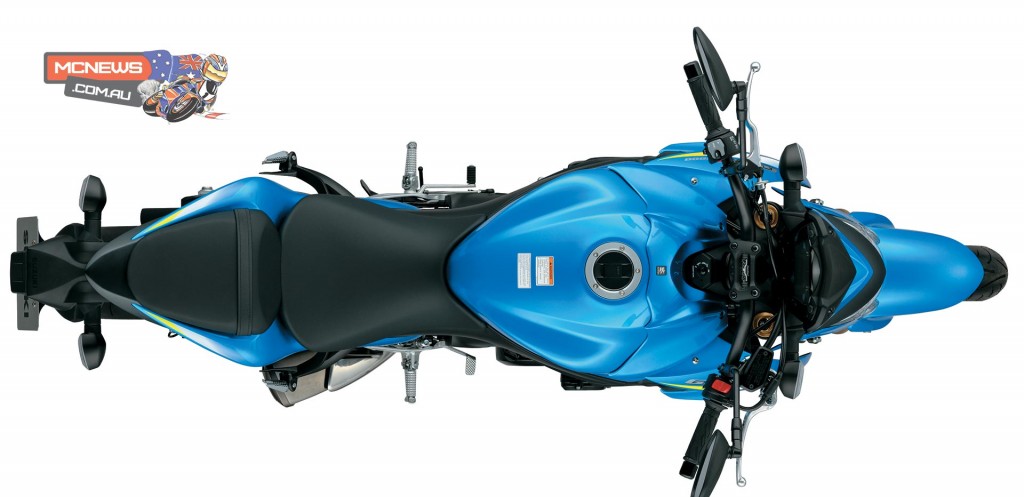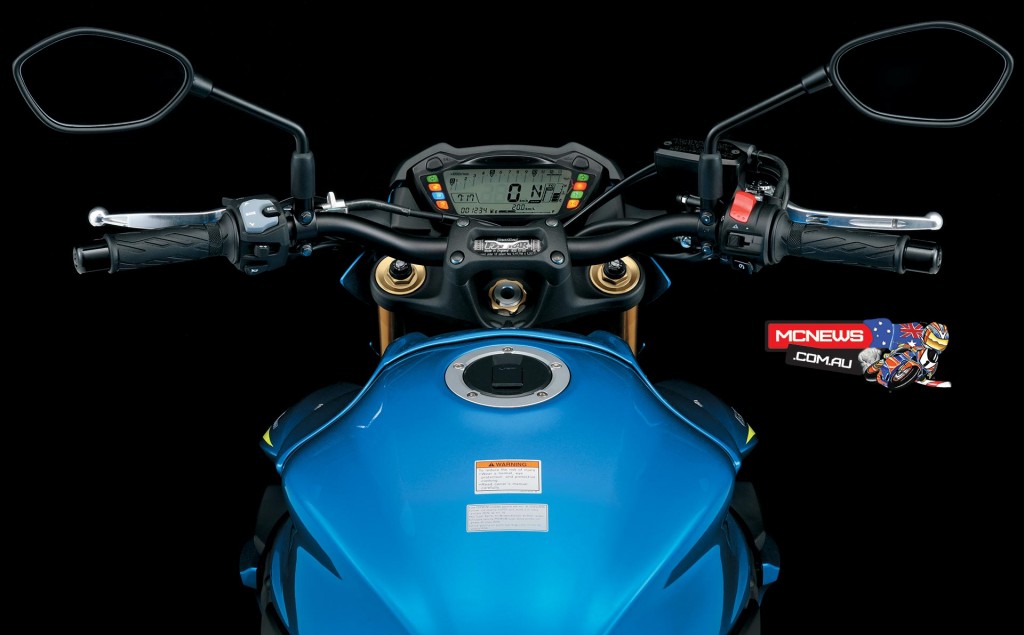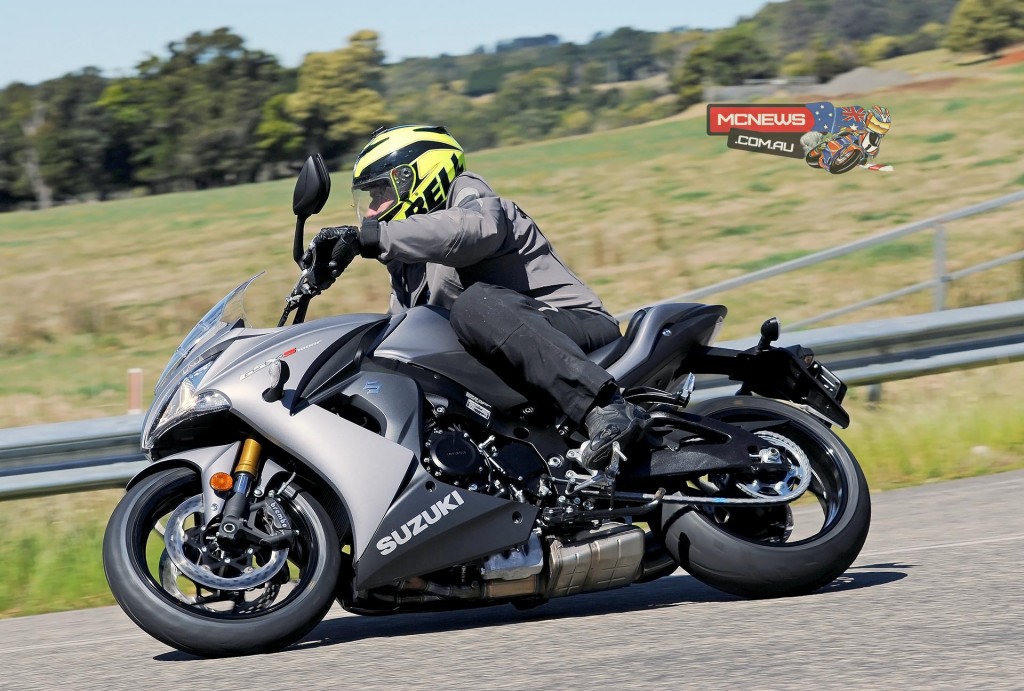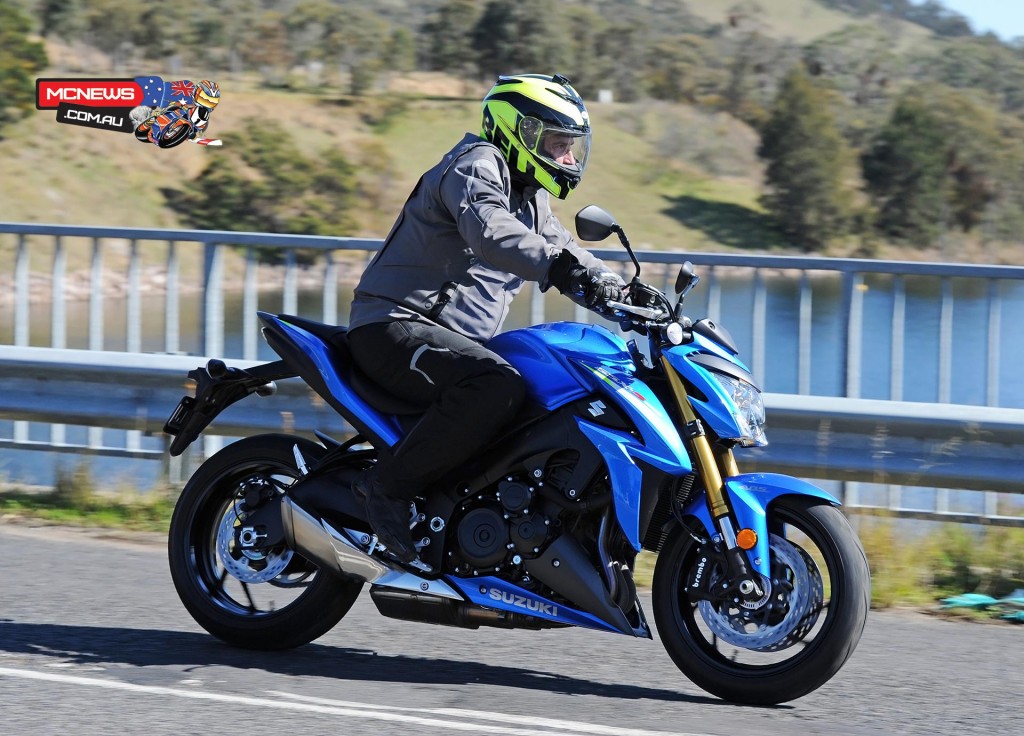Suzuki GSX-S1000 Review – Suzuki GSX-S1000F Review
Page Three – Tested by Trevor Hedge
@mcnewscomau on Instagram, or @mcnewscomau on Twitter and Facebook MCNews.com.au
The ergonomics felt fine to me on both GSX-S1000 variants. The rider seat is quite supportive, not too soft and not too hard, and without any sharp edges. I didn’t sample the pillion perch but I can’t imagine it’s all that friendly for anything but short hops.
A 17-litre tank and modern engine management means that the GSX-S1000 would be good for 240km even if ridden with no mercy. In normal use 300km should be expected and on the 600km launch route the machines seemed quite frugal.
The machine feels quite slim between the knees and throwing a leg over it seems even easier than its already quite low 810mm advertised seat height might suggest. Ground clearance is quite reasonable too, considering that low seat height.

The instrumentation works well, although I am yet to meet an LCD tachometer that I like, Suzuki’s interpretation of it is at least better than most. The mirrors offer a pretty good view and remain clear.

In the handling stakes the semi-faired GSX-S1000F turns in and steers noticeably better than the fully naked variant. A little more oil in the fully-adjustable 43mm KYB forks, or a smaller air gap if you want to look at it in those terms, is the only reason Suzuki could provide me with the difference in handling, but the contrast was stark. The F machine front end felt more agile and sporting, thus this tiny tweak to the forks is something I would certainly be doing to the naked model. Suzuki’s reason for making the change on the F was that the fairing added a little more downforce at speed.

At the reasonably brisk road pace we maintained the preload and rebound adjustable shock handled things fine. On a track, or two-up, however, I suspect it might be found a little wanting. Serious nutters will want an Ohlins TTX. Everything deserves an Ohlins TTX, I want one on my office chair.
Both ends benefitted from a couple of extra turns of preload and a little more compression damping up front, but the trade-off was a little less compliance and comfort when the roads turned less than perfect. As you would expect. Even on standard settings, however, the GSX-S1000 is no wallower and holds a line well.
In fact suspension is one area where the latest technology could certainly improve the GSX-S. The semi-active electronic suspension forks and shock available on some, considerably more expensive, bikes certainly would add to the overall versatility of the bike. Of course, owning bikes with that sort of kit when they’re out of warranty is a bit of a gamble, the technology is still in its relative infancy, and the long-term durability of these systems is yet to be proven. Thus there are benefits of the analogue approach here for riders that like to hang on to their machines for the long term.
There are no complaints about the braking performance. The initial bite is softer than that of a GSX-R, which is well suited to the softer fork set-up. Nothing a change of pads wouldn’t fix if you want a bit more initial bite, but you’re getting into serious nutter level before you would bother with even doing that.
























